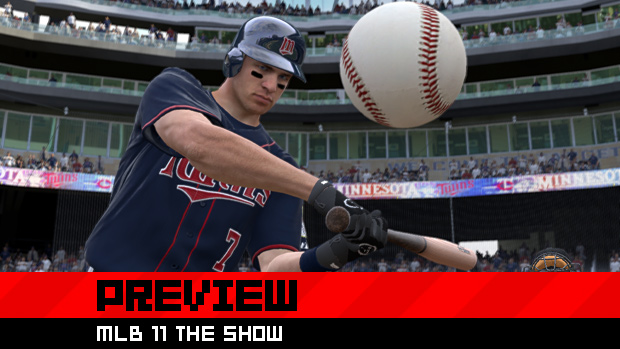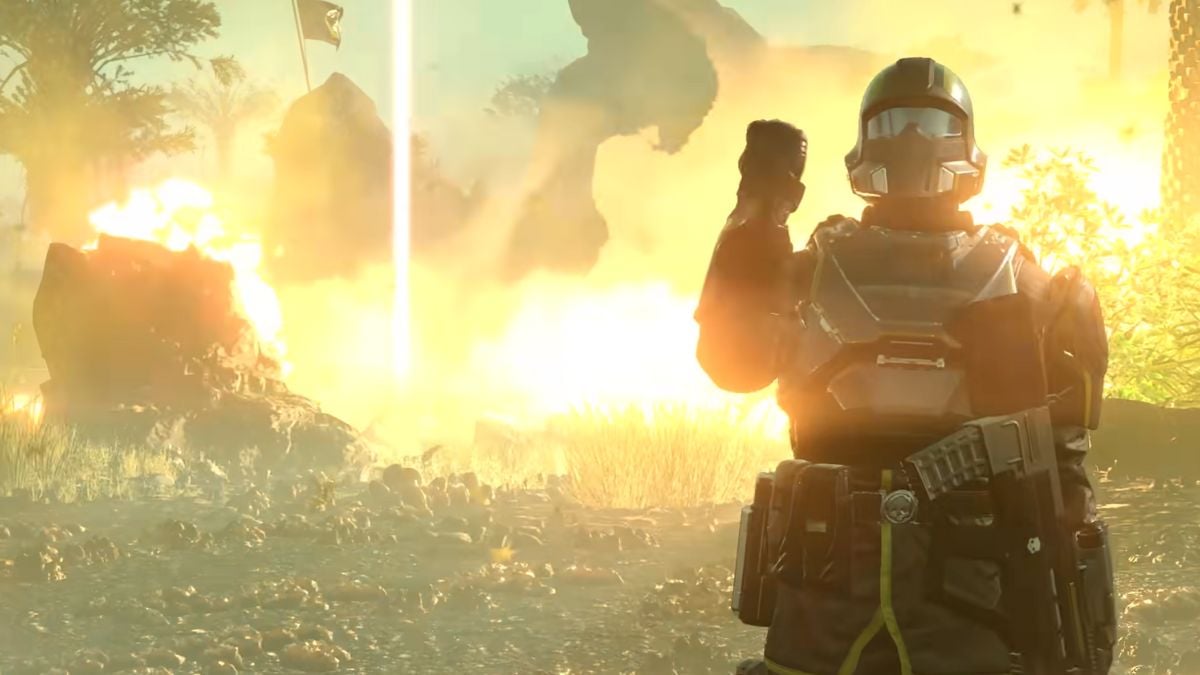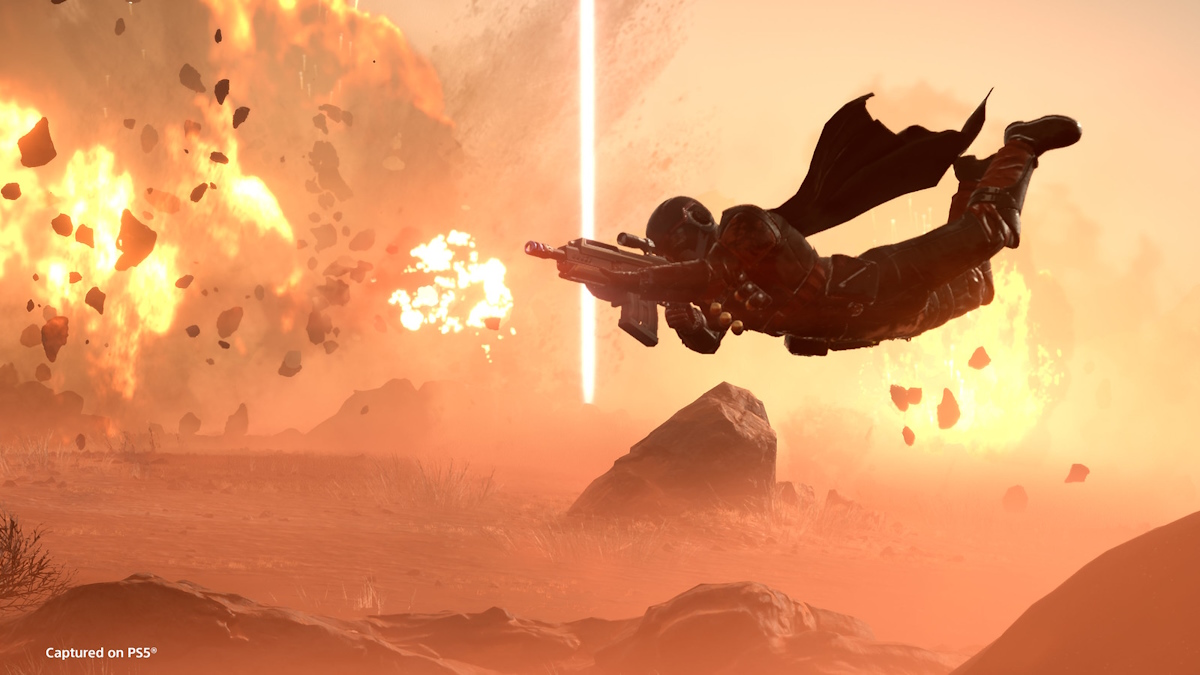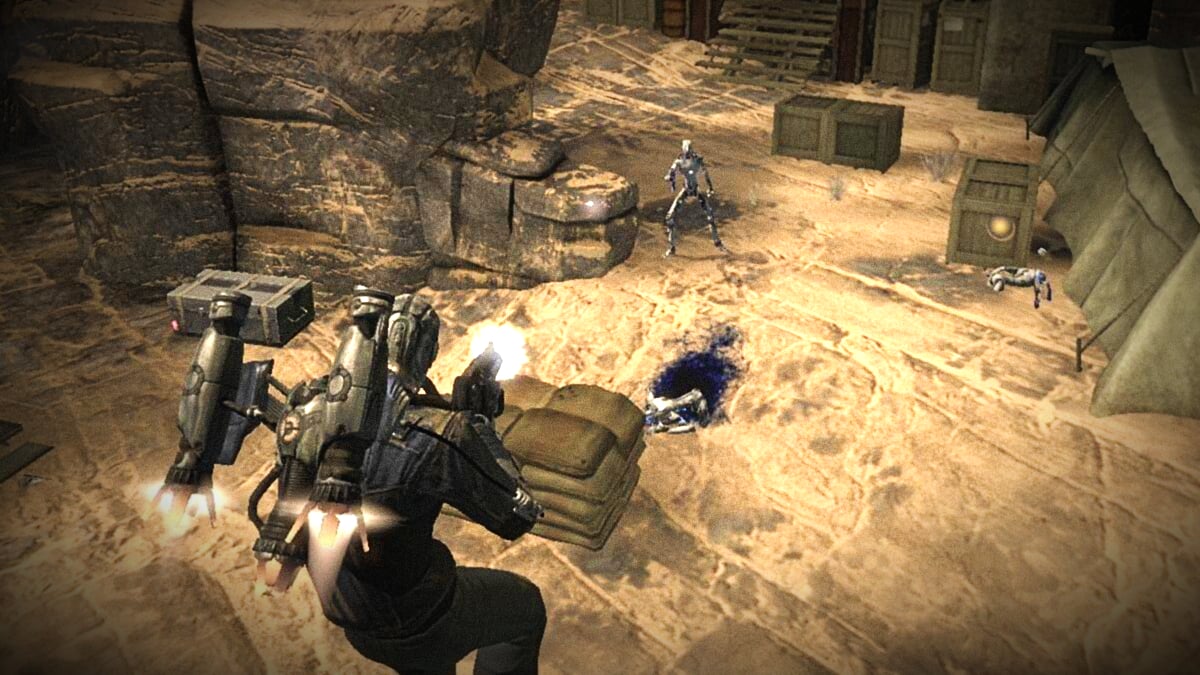Sony’s competitor in the baseball space, 2K Sports’ Major League Baseball 2K franchise, has included analog-stick controls for years. But the folks at Sony San Diego, the studio behind the MLB The Show series, vowed not to implement analog controls until they felt they could do it right.
They’re finally bringing analog controls into The Show with MLB 11 The Show, and the pitching setup, at least, is very different from the system in MLB 2K. That franchise’s developer, Visual Concepts, is glad to see The Show catching up with the times, but a designer on MLB 2K11 recently told me he finds the premise of MLB 11’s analog pitching to be “boring.”
I’ve had a couple of hands-on sessions with MLB 11 in recent weeks, and while I liked a lot of what I saw, I’m not yet sure that The Show’s analog controls are right for me.

MLB 11 The Show (PlayStation 3 [previewed], PlayStation Portable, PlayStation 2)
Developer: SCE San Diego Studio
Publisher: Sony Computer Entertainment
To be released: March 8, 2011
The analog hitting and fielding in MLB 11 works very similarly to the way it does in MLB 2K. To hit, you pull back on the right stick to bring your hands back, and then flick upward to swing the bat. Timing is critical; you’ll want to pull back to preload your swing during the pitcher’s windup, so the swing ends up being one fluid motion (pulling back too early or too late will greatly reduce your chances of making contact). The option to use a contact swing or power swing still exists with a button press before the pitch. There are two ways to check your swing: pull down on the stick after you’ve started to push it upward, or merely let it go upward to the neutral position. To bunt, just push forward from neutral.
I’m not a very good hitter in The Show as it is, since I spend most of my time playing as a pitcher in Road to the Show, so I had difficulty making contact. But the system feels great, and it’s good to see that it doesn’t offer any reduced functionality compared to button hitting. Analog fielding is really going to test your stick accuracy. Imagine the baseball diamond transposed onto the right stick: right is for first base, up is for second base, and so on. You push the stick in the direction of the base you want to throw to, and the longer you hold it there, the harder the throw will be. (For throws to the cutoff man, you hold L1 and flick.)

The system asks for a deft touch. If you don’t flick toward cardinal east, north, west, or south, your throw will be off — and if you hold the stick too long, it’s probably going to sail over your target’s head. On a stolen base opportunity, I had my catcher throw the ball to second base. But I pushed the stick up and slightly left; as a result, the throw ended up on the shortstop side of the second-base bag, and the runner slid safely in. And I saw more than a few instances in which my opponent air-mailed a routine throw, giving me an extra base or two.
Analog pitching, too, requires pinpoint control — especially with hurlers who aren’t aces. The system is both timing- and control-sensitive, just like real pitching. Unlike the gesture-based pitching in MLB 2K, where a four-seam fastball and a two-seam fastball require different movements, the basic analog-stick motion is the same for every pitch. Pulling down on the right stick initiates the windup, and a small baseball icon starts to move downward toward a horizontal yellow line on the vertical pitching meter. The idea is to flick the stick upward at the moment that the ball hits the yellow line. The intensity of the flick determines the amount of effort that your pitcher puts into the delivery, but you’ll quickly tire him out if you try too many throws with extra “oomph.”

Of course, it’s only that simple if you want to throw the pitch over the heart of the plate. Once you start moving the ball around the plate, a direction indicator above the vertical pitch meter will correspond to how far your pitch deviates from dead center. With a pitch thrown right down the pipe, you’ll flick straight upward. But if you’re aiming to the right or left, you’ll have to flick the stick upward and to the right or left, respectively; the further away from the middle of the plate you’re aiming, the more your flick will deviate from true north, so to speak. The timing of the delivery will be quicker if you’re pitching out of the stretch instead of the windup, and if you don’t hit the yellow line exactly, your pitch will break less or more (depending on whether you’re early or late, respectively).
As you can see, there’s a lot to take in. Analog pitching is also very unforgiving in its challenge; missing either the timing or the positioning may cause your pitch to end up in a place you don’t want it to go. You’ll be throwing many more balls than in years past, and what’s exciting is that the system really differentiates the wheat from the chaff. I created a pitcher in Road to the Show, and I noticed that I had to be very conservative in aiming with the 61-rated minor-leaguer. You simply won’t be painting the corners at will, and that’s the way it should be.

I did notice one major issue inherent in the system: the meter in local two-player (or four-player, as the case may be; MLB 11 includes a co-op mode) games doesn’t give you the left/right control display. That makes sense, since you don’t want your opponent to know if you’re throwing inside or outside. But that means that determining location when pitching against a human opponent who’s sitting next to you is purely a “feel” exercise: you have to have an idea of how far left/right you’re aiming, and then you have to flick upward and left/right by yourself — without the help of the on-screen indicator. It seems like something that’s going to take a long time to learn. If you’re having a lot of trouble, you can switch to Rookie difficulty, where you’ll only have to worry about the release-point timing, not the side-to-side control.
[For a more succinct video explanation of analog pitching in MLB 11, go here.]
This year, Road to the Show (RTTS) has changed up its player creation setup. You’ll still be allocating attribute points, but at the start, you have to balance your player on a set of sliders. Pitchers, for example, can be stamina guys or power guys, Maddux-like control freaks or hurlers with lots of movement on their pitches, and have a balanced repertoire or feature one dominant pitch. Similarly, you’ll have to put your hitter somewhere on the spectrum between power and contact, and arm strength and accuracy for fielders. These characteristics will determine the initial layout of your player’s attributes, and since you can’t max out any one rating at the start, you’ll have to play through RTTS to improve your skills.

Sony San Diego really focused on visual improvements in MLB 11. I selected “rain” as the weather for an exhibition game, and noticed that the skies started out overcast and gradually darkened before a drizzle began. The field also looked wet; the infield dirt filled with darkened splotches, especially in the base paths. Also new is an optional eight-pitch warmup session for starting pitchers. You can turn this off, but if you leave it on and skip the warmup process, your starter will begin the game cold.
I’m going to need to spend a lot more time with MLB 11 before I can decide if I prefer its analog controls to the tried-and-true button controls of yore. Everything else seems like a further evolution of a series that’s been great for years, so I’m excited to get my hands on the full game in the next couple of weeks. You can try it out for yourself right now: a four-inning demo went up on the PlayStation Store today.




